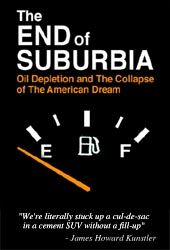Attorney Bob Hall thinks the Land Development Code “certainly has a lot of bugs,” according to today’s Journal Star. But it doesn’t really. It just has a lot of things he or the developer he represents either doesn’t like or doesn’t understand, which is typical regardless of what zoning regulations are in place.
Still, some comments made by Mr. Hall deserve a response.
Hall said the reason [council deferred approving a variance for 741 W. Main] was because other requirements within the code were preventing the redevelopment from occurring.
One of those requirements focuses on the size of awnings required along Main Street. Hall said the zoning requirements maintain that an awning six-feet horizontally would have to go up.
“It would probably stretch out into Main Street,” he said.
Not quite. I went out today and measured. From the front of the building to the curb, it’s seven feet. A six-foot awning would do exactly what it’s supposed to do — cover the sidewalk to within a foot of the street. Awnings have a purpose, and it’s not to be merely decorative. They provide shade and shelter for pedestrians and patrons, as well as additional signage for the business. They’re also not required; the code simply says when you have them, they have to be a certain size. In any event, there’s nothing about the awning requirement that should be “preventing the redevelopment from occurring,” other than the developer just not liking it.
Also, Hall said there is no requirement for a street wall or any decorative fencing at newer developments at nearby properties, such as the Peoria NEXT Innovation Center.
“Newer” developments to be sure, but approved before approval of the Land Development Code took effect. Had the LDC been in place when those projects were approved, they would have had to follow the same guidelines.
But [Hall] said he has other clients wanting to redevelop in the city’s older neighborhoods and that the code’s detailed specifics are causing problems. For instance, Hall said Knoxville Avenue – where one of the developments is to occur – “should not have been included” as part of the land development code, which highlights the principles of New Urbanism to make older neighborhoods more pedestrian friendly.
“Knoxville is a thoroughfare,” Hall said. “New Urbanism is for neighborhood stuff.”
These statements illustrate the need for education, something the Heart of Peoria Commission was working on when it was unceremoniously disbanded. New Urbanism is not just about making older parts of town more walkable, nor is it restricted only to neighborhoods. The principles of New Urbanism were only applied to the older parts of Peoria because those were the bounds set by the city council for the Heart of Peoria Plan project. New Urbanism is a comprehensive philosophy of town planning that covers private and public space, commercial and residential areas, streets and thoroughfares. In fact, all these things have to work in concert with each other to create great places; it’s the dis-integration of these things that has caused many of our urban (and suburban) problems.
The Land Development Code is going to get challenges like this until developers understand the purpose behind it, adapt to it, and hopefully embrace it. It’s incumbent upon the Planning and Growth Department to provide this education and to defend the code — within reason, of course.
And here, I should mention that I’m not saying the code cannot ever be questioned. But challenges to the code must be made in context with the intent of the code. The street wall requirement, for example, was worth taking under consideration. There was some disagreement over where that requirement in the code came from — Ferrell-Madden claimed it was the architectural review committee that insisted on it, but one of the members of that committee claims it was Ferrell-Madden’s decision to include it. Ultimately, the ad hoc group that is reviewing the form-based code portion of the LDC, with input from Ferrell-Madden, decided to modify this provision, but only because such revisions could be done while still fulfilling the code’s intent.

 Here’s a thought-provoking documentary from 2004 called “
Here’s a thought-provoking documentary from 2004 called “